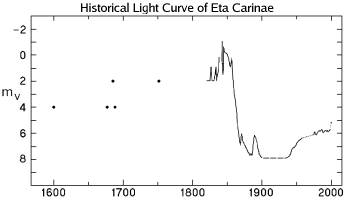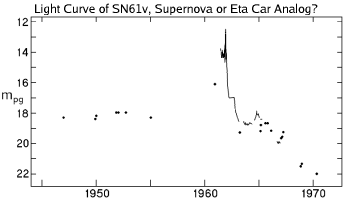


During the past several years it has become increasingly apparent that eta Carinae and the rare objects like it, are telling us something about how the most massive stars end their lives.
Eta Carinae, the most massive and most luminous star in our region of the Milky Way, has received considerable attention in the past decade, but the cause of its basic instability and its great eruption are still a mystery.
The recent extensive surveys for supernovae have produced a growing class of objects that may not be true supernovae at all, the supernovae impostors which may be objects undergoing eruptions similar to eta Car.
The purpose of this meeting is to explore the behavior and characteristics of evolved, massive stars, the origin of their instabilites, their final stages and their relation to hypernovae and GRBs. We want to bring together people working on the most massive stars with those studying the final stages, SNe and GRBs.